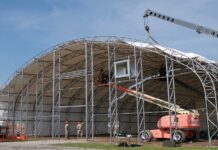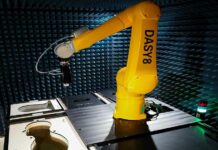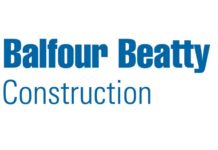As the construction industry faces a growing labor shortage, contractors struggle to fill jobs, keep projects on schedule and meet demand. Old-school hiring methods aren’t working anymore. It’s time to think differently.
Understanding Hiring Issues in the Construction Sector
Walking onto almost any active construction site is enough to see the symptoms of the ongoing labor crisis. Delayed timelines, overworked crews and half-finished projects are becoming too common. Many experienced workers are nearing retirement, and there are not enough new workers to replace them.
The physical demands, safety risks and misconceptions about construction as a “fallback” career make recruitment even more challenging. As a result, 80% of contractors have difficulty filling some or all positions. Not finding enough qualified workers to meet project demands often leads to increased reliance on subcontractors or higher overtime costs for existing staff.
In some cases, projects are being postponed or downsized due to workforce constraints. These challenges affect the bottom line and compromise safety, quality and client satisfaction. Without proactive solutions, the industry risks a slowdown in growth and innovation, and — as a consequence — it can’t meet rising infrastructure and housing needs.
These 10 creative and practical solutions can help construction firms overcome the hiring crisis and identify opportunities to build a more resilient workforce.
1. Tapping Into Untapped Talent Pools
In the past, the construction industry has typically relied on male workers. However, the industry is starting to shift. Opening up opportunities for underrepresented groups — including women, veterans and immigrants — is a smart business move.
Many individuals bring discipline, reliability and problem-solving skills that align perfectly with construction job demands. Removing entry barriers — such as outdated hiring practices or non-inclusive work cultures — is key to attracting a wider, more resilient talent pool.
2. Leveraging AI for a Smarter Construction Workforce
Technology is emerging as a vital ally in addressing the challenge of worker shortage. AI has evolved from a futuristic idea to a practical tool for optimizing labor management, supply chain operations and equipment maintenance. It is especially relevant in a field where delays can lead to large financial losses.
Innovative technology can benefit construction companies by doing the following:
- Analyze patterns across many projects to forecast staffing needs in advance.
- Help companies avoid sudden labor gaps and improve the allocation of skilled workers.
- Support project scheduling, allowing contractors to factor in worker availability and even predict delays before they happen.
- Reduce the heavy paperwork burden on human resources teams by handling repetitive tasks, such as document verification, onboarding flows and candidate screenings.
One of the greatest benefits of machine learning is that it frees managers to focus more on training, mentorship and worker well-being — areas that directly impact retention and team cohesion. Companies using AI-driven workforce planning tools are becoming more agile and better equipped to face the unpredictable tides of labor availability in today’s market.
3. Automating Tasks to Free Up Skilled Workers
Automation is about enhancing human labor in the construction sector, not replacing it. Emerging technologies — such as robotics, drones, 3D printers and AI-powered project management tools — are transforming how work gets done.
Drones can survey a site in minutes, and robotic arms can lay bricks or apply spray insulation faster and more consistently than human hands. These tools and others like them free up skilled laborers to focus on tasks that require creativity, leadership and problem-solving.
Automation also helps reduce workplace injuries by handling repetitive or hazardous tasks. Investing in even one or two automated solutions can create a ripple effect for small to midsize firms, improving efficiency and employee satisfaction.
4. Building Career Paths, Not Just Jobs
One of the most common reasons people leave the construction industry is the lack of a clear future. Without visible paths to promotion, retention becomes a challenge. Companies that articulate a structured career ladder — from entry-level laborer to site supervisor or foreman to project manager — see better engagement and lower turnover.
Here are some ways to build career paths in construction sites:
- Offering transparent goals
- Providing performance incentives and advancement opportunities
- Teaching financial education
- Conducting leadership training
- Ensuring access to continuing education
These opportunities can make construction a long-term career rather than a short-term gig. Construction workers want to know that their personal development is as important as the company’s success.
5. Embracing Gen Z With Flexible Thinking
Generation Z is entering the workforce with different values and expectations than earlier generations. They focus on flexibility, diversity, digital tools and meaningful work. To attract this generation, construction companies need to rethink their image.
This includes modernizing recruitment through social media, highlighting purpose-driven projects and offering flexibility where possible. For example, some firms have begun using TikTok to showcase jobsites, employee stories and behind-the-scenes looks at projects. Others are implementing digital onboarding processes and mobile-first training programs.
Another alternative is developing educational initiatives that integrate practical training with theoretical instruction. Virtual and augmented reality technologies — combined with gamified features in training programs — make the learning experience more engaging.
Gen Z workers want to be part of something. Firms that create an inclusive, forward-thinking culture will have a better chance of keeping this new workforce on board and engaged.
6. Rethinking Training to Invest Smarter
One of the smartest moves a contractor can make is to invest in training. Allocating just 1% of a labor budget to training can result in an estimated 11% increase in productivity. This kind of ROI transforms training from a cost to a strategic asset.
Training programs designed for specific job roles can fast-track new workers. Strategic training can also upskill current employees and reduce costly errors on-site. Moreover, offering robust training signals to prospective hires that this is a company invested in skill-building and worth joining.
Here are some ways to accelerate onboarding while reinforcing safety protocols and efficiency:
- On-site mentorship
- Hands-on apprenticeships
- Modular e-learning platforms
Personalized learning paths lead to certifications or licenses and can increase employee engagement and loyalty.
7. Partnering With Schools and Community Colleges
Early intervention is key to solving the labor shortage over the long term. Too often, students graduate without ever hearing about the opportunities in construction. Partnering with high schools, technical schools and community colleges can change this trend.
Construction companies can offer guest lectures, open jobsite tours, internship programs and equipment donations to vocational programs. These partnerships help shift the narrative around construction as a “fallback” job, instead presenting it as a smart, stable career path.
By building relationships with educators and career counselors, firms can ensure a steady stream of future talent who are prepared and enthusiastic to join the industry.
8. Upskilling Current Construction Crews
In the rush to hire new talent, many companies forget the untapped potential of their existing workforce. Upskilling current employees are a great way to address skill gaps while boosting morale and retention.
Offering pathways for internal promotion through targeted training, micro-credentials and peer mentoring programs can help workers evolve into leadership roles.
This reduces dependency on external hires while cultivating a more knowledgeable and loyal team. Upskilling can also include cross-training, allowing workers to step into multiple roles depending on the project’s needs. This adaptability is a key asset in today’s fast-paced construction environment.
9. Improving Culture and On-Site Conditions
While wages and benefits matter, culture often makes or breaks an employee’s decision to stay in their current role. A positive workplace culture built on respect, safety and inclusion can reduce turnover and attract top talent.
Here are some ways to improve on-site conditions:
- Shaded rest areas
- Hydration stations
- Mobile charging docks
- Healthy meal options
Implementing these features demonstrates a commitment to employee well-being.
Improving workplace culture is also a key part of encouraging workers to bond and feel positive about their work. Here are ways to improve culture:
- Recognition programs
- Regular check-ins
- Open communication channels
- Enforcing zero-tolerance policies for discrimination and harassment
- Offering mental health resources
These methods for improving culture and on-site conditions can build trust and community. Culture is more than a soft metric — it’s a strategic advantage.
10. Bringing Workers On-Site Faster
Hiring delays can hold up projects, increase costs and frustrate teams. One of the key reasons behind these delays is the complex web of bureaucracy that surrounds construction hiring. From licensing and compliance requirements to lengthy onboarding paperwork and verification processes, many companies lose valuable time before a worker even steps onto a jobsite.
Streamlining these systems is becoming urgent. Forward-thinking contractors are simplifying procedures without compromising safety or legal standards. Some companies are digitizing the onboarding process, allowing new hires to submit credentials, complete safety training and get site-ready from their phones before their first day.
Building the Future, One Fix at a Time
The labor shortage in the construction sector is intricate, yet it can be addressed. It calls for innovative thinking, teamwork and an openness to change. These 10 strategies demonstrate that the answer lies in attracting new talent and discovering fresh methods to support, retain and uplift existing employees.




























